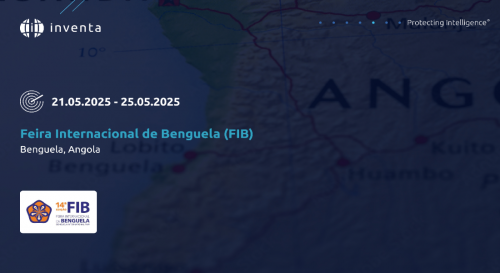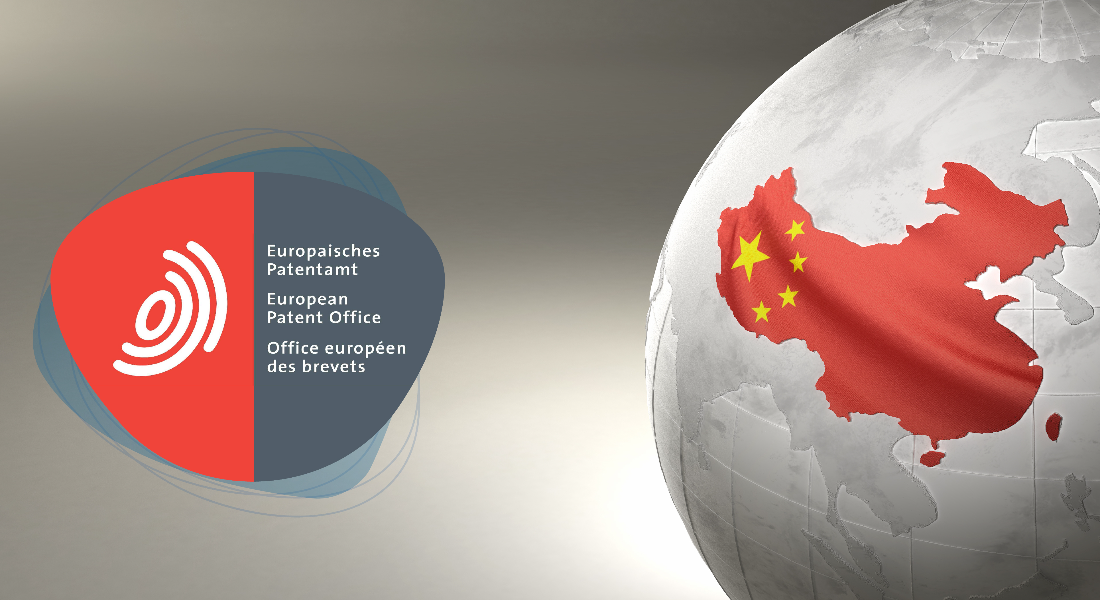
Patenting Activity before the European Patent Office by Chinese Organizations
The Chinese organizations have been investing in several European markets, and an effective protection by means of the patent system is comprised in the strategy of said organizations. Regarding protection of intellectual assets by means of patents, filing a patent application before the European Patent Office is a common approach to have patents in force in several European countries. The EPO is the regional Patent Office, which covers 38 member states, two extension states and 4 validation states, wherein some of this later group is geographically located outside Europe. After a patent being granted by EPO, it is necessary to validate European patent in the countries where the applicant has interest in protecting its invention.
In this sense, this article will seek to identify the profile of patent applications having origin in China and filed before EPO, in order to reveal the technological fields of the respective patent applications, and the main applicants. Moreover, we present some results about quality indicators of the European patent applications, which are related to the prosecution before EPO.
Filings of patent applications before EPO
We have evaluated the trend of filings of European patent applications before EPO from 2000 to 2018, wherein the applicant/proprietary of a patent application is domiciled in China. For retrieving the related data, we have used the database EP Bulletin Search, provided by EPO. We may observe in figure 1 a remarkable growing trend of patent applications originated from China and filed before the EPO in this period. According to the “Annual Report 2018 - Statistics at a glance”, issued by EPO, China is in the sixth position in the ranking of the geographic origin of the European patent applications.
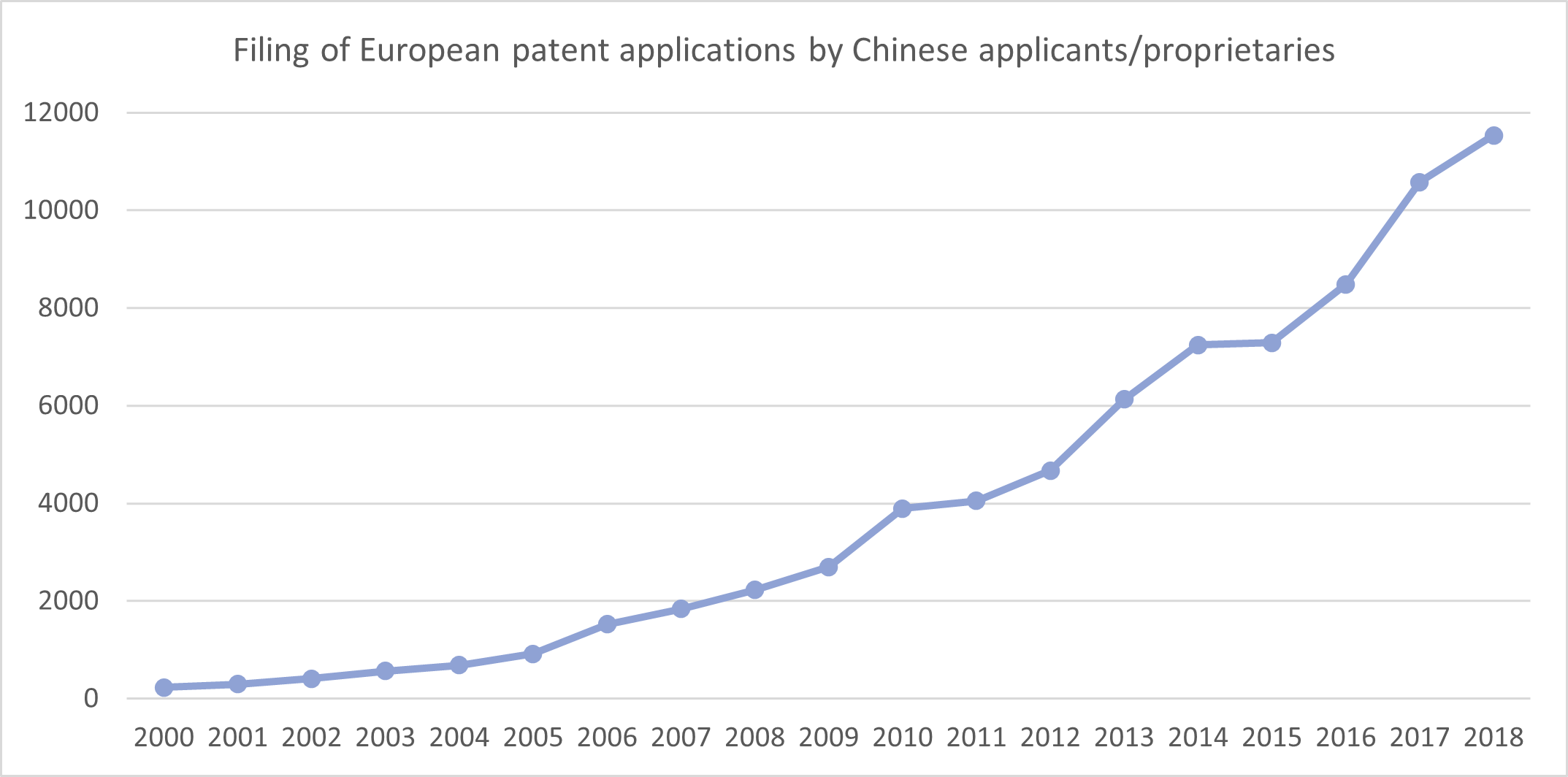
(Figure 1)
Identification of the main technological fields related to the European patent applications
We have analyzed the International Patent Classifications (IPC) regarding the patent applications filed in 2000, 2005, 2010 and 2015 by means of the statistics tool incorporated in the database EP Bulletin Search, wherein we have considered all the patent applications filed in 2000 and in 2005, and samples comprising the first 1500 patent applications filed in 2010 and in 2015. The IPC refers to an indexing code, which is related to the technological field of a patent application. We present in figure 2 the evolution of the top 10 IPCs, considering the overall sum of patent applications related to a certain IPC symbol, for each filing year studied. The patent applications referred to the top 10 IPCs correspond to about 80% of the overall number of patent applications filed in the period. Moreover, we present in table 1 the description of the technological fields correspondent to the respective IPC subclasses.

(Figure 2)
"In comparison with other countries from which significant filings of European patent applications are originated, China focuses his filings before EPO in fewer technology fields, namely digital communication, and computer technology. "
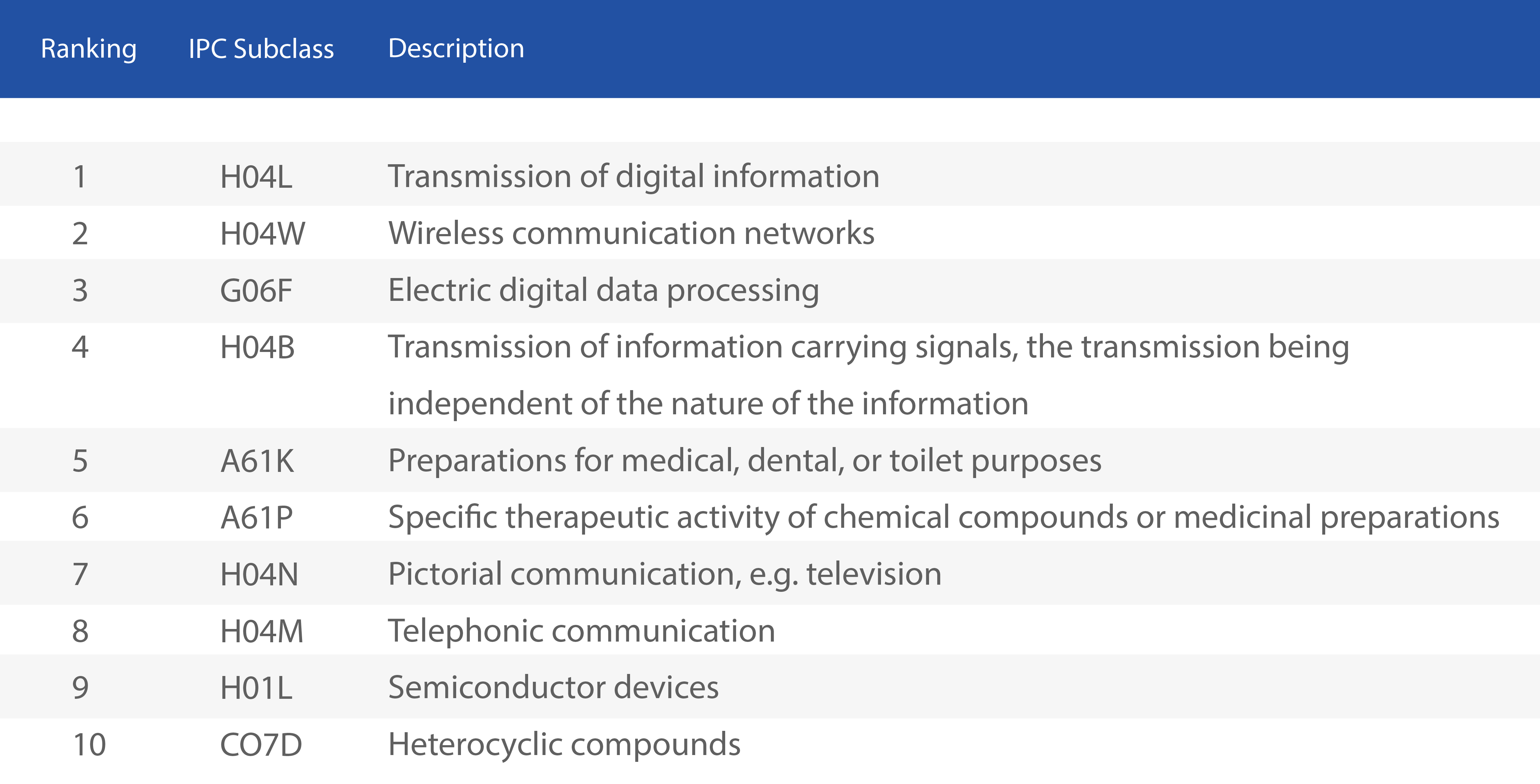
(Table 1)
The results of figure 2 and the descriptions of the IPC subclasses show a prevalence of patent applications related to information and communications technology (ICT). The pharmaceutical industry also contributes with a relevant share of the European patent applications, according to the high ranked subclass A61K, which usually is indexed together with the subclass A61P and the subclass C07D, wherein this later is linked to inventions regarding new active pharmaceutical chemical compounds.
According to the “Annual Report 2018”, issued by EPO, the core profile of Chinese applicants is based on technology fields related to digital communication and computer technology. In comparison with other countries from which significant filings of European patent applications are originated, China focuses his filings before EPO in fewer technology fields, namely digital communication, and computer technology. The applicants from EPO states and from the United States, for example, file European patent applications in a broad set of technology fields, for instance pharmaceuticals, biotechnology, organic fine chemistry, medical technology, electrical machinery and transports, besides digital communication, and computer technology.
Identification of the main applicants
We present in figure 3 the evolution of the top 10 applicants, considering the overall sum of patent applications related to each applicant for the European patent applications filed in 2000 and in 2005, and samples comprising the first 1500 patent applications filed in 2010 and in 2015 by means of the statistics tool incorporated in the database EP Bulletin Search. The top positions of the companies comprised in the Huawei Group, ZTE Corporation and BOE Technology Group confirm the prevalence of patent applications related to ICT, telecommunications, and internet of things technologies. The patent applications referred to the top 10 applicants correspond to about 77% of the overall number of patent applications filed in the period. Indeed, according to the “Annual Report 2018 - Statistics at a glance”, Huawei is the second largest applicant of European patent applications.
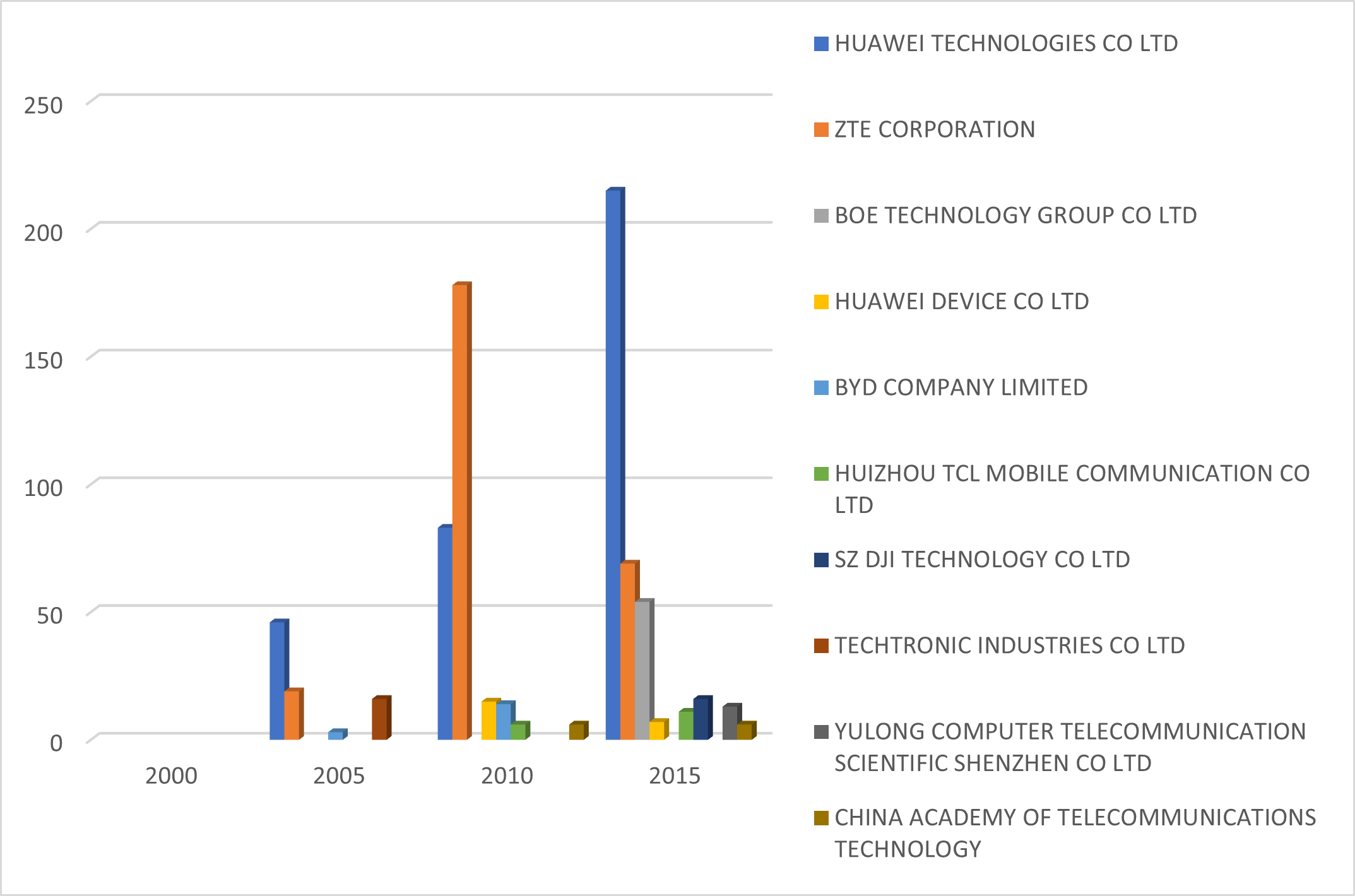
(Figure 3)
Quality of the filed patent applications
Assessing the quality of a patent application is a subjective matter and it is relevant to make clear which quality indicator is used. In this study, we have evaluated the granting share, the refusing share and the withdrawn share of a sample set of European patent applications filed in certain years. Considering that EPO is one of the 5 most important and reputed Patent Offices in the world, we may consider the granting action carried out by the EPO as a positive quality indicator of a European patent application. On the other hand, a refusing action may be interpreted as a negative quality indicator of a European patent application because it happens, for example, when the patent application lacks the patentability criteria, namely industrial applicability, novelty and inventive step. Moreover, the withdrawn share of patent applications may be interpreted as a negative quality indicator, considering that the applicant leaves out the prosecution of a patent application after receiving a notification comprising objections to granting of the patent. Similarly, the applications deemed to be withdrawn share may also be interpreted as a negative quality indicator, considering that the applicant does not reply to EPO after receiving a notification from EPO comprising objections to patentability. We shall mention that the decisions regarding withdrawals may also be related to losing of interest by the applicant in a certain patent application, independent of objections raised during the examination, which results in abandonment of the prosecution or missing payment of renewal fees.
Therefore, in order to identify the evolution of the quality of European patent applications originated from China, we have gathered results obtained from the database EP Bulletin Search regarding granted patents, refused applications, withdrawn applications and applications deemed to be withdrawn corresponding to the European patent applications filed in 2000 and in 2005, and samples comprising the first 1500 patent applications filed in 2010 and in 2015, wherein these results are present in figure 4.
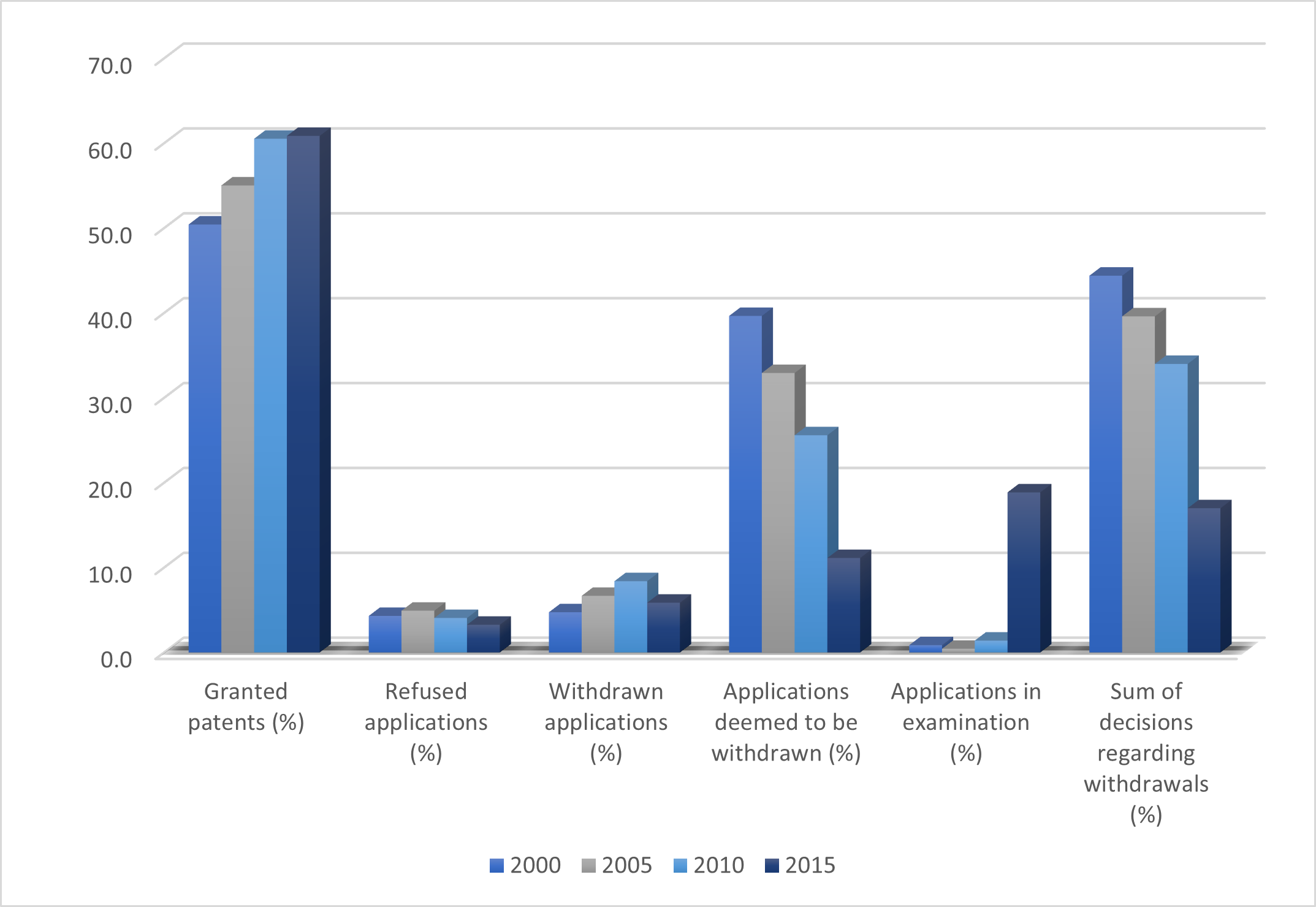
(Figure 4)
It is possible to conclude that the quality of the European patent applications originated from China has been increasing since 2000, wherein the granting shares increased 21% when we compare the granting decisions of patent applications filed in 2000 and in 2015. In the very same period, the sum of percentual decisions regarding withdrawals decreased 61%. Therefore, this significant improvement of the quality indicators of inventions originated from China, illustrated by a larger share of European patent applications granted by the EPO, occurs in the context of an expressive elevation of the number of filings before said Patent Office (as we see in figure 1, the number of filing increased almost 32 times when we compare filings from 2000 and 2015).
Conclusions
The use of the patent system by Chinese applicants has been increasing in an outstanding way, as we may observe in the filings of European patent applications having a Chinese organization as an applicant/proprietary of the patent asset. Another highlight provided by our study is the continuous elevation of the absolute and percentual indicators related to patent granting by EPO. These results are influenced by the remarkable investment done by China in its National Patent Office and forming people necessary to run internally the patent system, for example, patent attorneys and patent examiners. Of course, these expressive results are also based on dynamic organizations that seek to operate globally, developing technical solutions for specific technological sectors, mainly digital communication and computer technology.
This article was originally published in China IP Magazine.
Lista de Territórios
Não existem resultados para a sua pesquisa.
- África
- África do Sul
- Angola
- Argélia
- Benin
- Botsuana
- Burkina Faso
- Burundi
- Cabo Verde
- Camarões
- Chade
- Comores
- Costa do Marfim
- Djibuti
- Egito
- Eritreia
- Eswatini (Suazilândia)
- Etiópia
- Gabão
- Gâmbia
- Gana
- Guiné
- Guiné-Bissau
- Guiné-Equatorial
- Lesoto
- Libéria
- Libia
- Madagáscar
- Maiote
- Malaui
- Máli
- Marrocos
- Maurícias
- Mauritânia
- Moçambique
- Namíbia
- Níger
- Nigéria
- Quénia
- República Centro-Africana
- República Democrática do Congo
- República do Congo
- Reunião
- Ruanda
- Saara Ocidental
- São Tomé e Principe
- Seicheles
- Senegal
- Serra Leoa
- Somália
- Sudão
- Sudão do Sul
- Tanzânia
- Togo
- Tunísia
- Uganda
- Zâmbia
- Zanzibar
- Zimbábue
- África (OAPI)
- África (ARIPO)
- Mais Territórios
- Macau
- Maldivas
- Portugal
- Timor Leste
- Marca da União Europeia (EUIPO)
- Marca Internacional (Sistema de Madrid)
- Patente Europeia (IEP)
- Tratado de Cooperação em matéria de Patentes (PCT)



